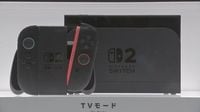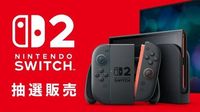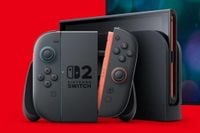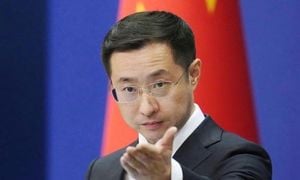Nintendo has announced a delay in the start of pre-orders for its highly anticipated new game console, the Nintendo Switch 2, in the United States. This decision comes as a direct response to the recent tariff increases imposed by the Trump administration, which have raised concerns about the potential impacts on pricing and market conditions.
On April 2, 2025, during the "Nintendo Direct: Nintendo Switch 2" presentation, Nintendo revealed key details about the console, including its release date and specifications. In Japan, lottery sales for the Nintendo Switch 2 commenced on April 4, 2025, with a retail price set at 49,980 yen (approximately $449.99). However, the situation in the U.S. is markedly different, as the company has decided to postpone the planned pre-order date, which was originally slated for April 9, 2025.
Nintendo's announcement indicated that the delay is necessary to assess the impact of the tariffs and the changing market environment. A spokesperson for the company stated, "To evaluate the potential effects of tariffs and the changing market conditions, we will not begin pre-orders for the Nintendo Switch 2 on April 9 as planned. We will update the pre-order schedule at a later date, but the release date remains unchanged on June 5, 2025." This statement was confirmed by various media outlets, including IGN, BBC, and Game Informer.
As it stands, the Nintendo Switch 2 is set to launch in the U.S. with a price tag of $449.99, and it will also be available in a bundle with Mario Kart World for $499.99. However, with tariffs reaching as high as 54% on products imported from China and 46% from Vietnam, where much of Nintendo's production has shifted, there are concerns that the final retail price may increase further.
Criticism has already begun to surface regarding the pricing of the Nintendo Switch 2. Former advertising managers for Nintendo of America, Kit Ellis and Chrisa Yanne, expressed their discontent, stating, "I don’t want to exaggerate, but this feels like a real crisis moment for Nintendo." Their comments reflect a growing sentiment among consumers and industry analysts that the pricing may be too steep for many potential buyers.
Market analyst Daniel Ahmad from Niko Partners noted that even though Nintendo had moved some production to Vietnam to mitigate U.S. tariffs on Chinese imports, the sudden imposition of tariffs on Vietnam by the Trump administration has forced the company to rethink its strategy. Ahmad commented, "There’s a strong possibility that Nintendo had to reconsider its plans due to the unexpected tariffs imposed on countries like Vietnam. This could lead to significant challenges for the company moving forward."
The Nintendo Switch 2 is set to feature cutting-edge technology, including an NVIDIA GPU and CPU, which will support advanced graphics capabilities such as AI-powered high-quality DLSS (Deep Learning Super Sampling), ray tracing, and G-SYNC technology. The console will also introduce a new packaging format for physical games, which will include a 'key card' for game activation. This key card will require an internet connection for the initial download of the game data and must be inserted during gameplay.
Despite the delays and uncertainties surrounding its launch, early hands-on reports of the Nintendo Switch 2 have started to surface online, with many gamers eager to see how the new features perform in practice. These reports can be found on platforms like YouTube, where various content creators are sharing their experiences with the console.
In summary, Nintendo's decision to delay pre-orders for the Switch 2 highlights the broader implications of international trade policies on the gaming industry. As the company navigates these challenges, it remains committed to delivering a high-quality product, with the release date still firmly set for June 5, 2025. However, consumers will be watching closely to see how the ongoing tariff situation affects pricing and availability in the months leading up to the launch.






